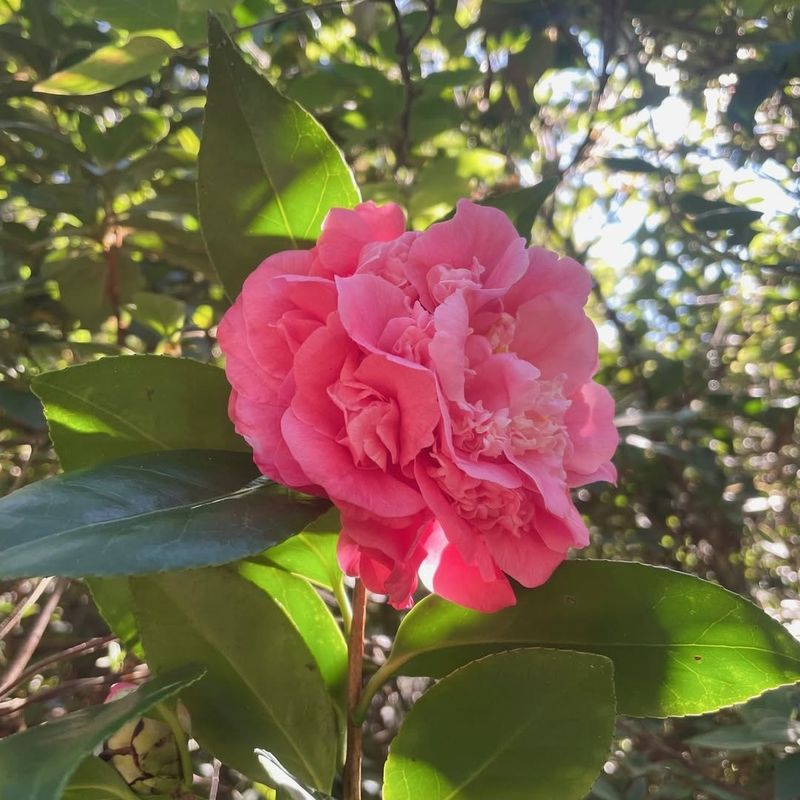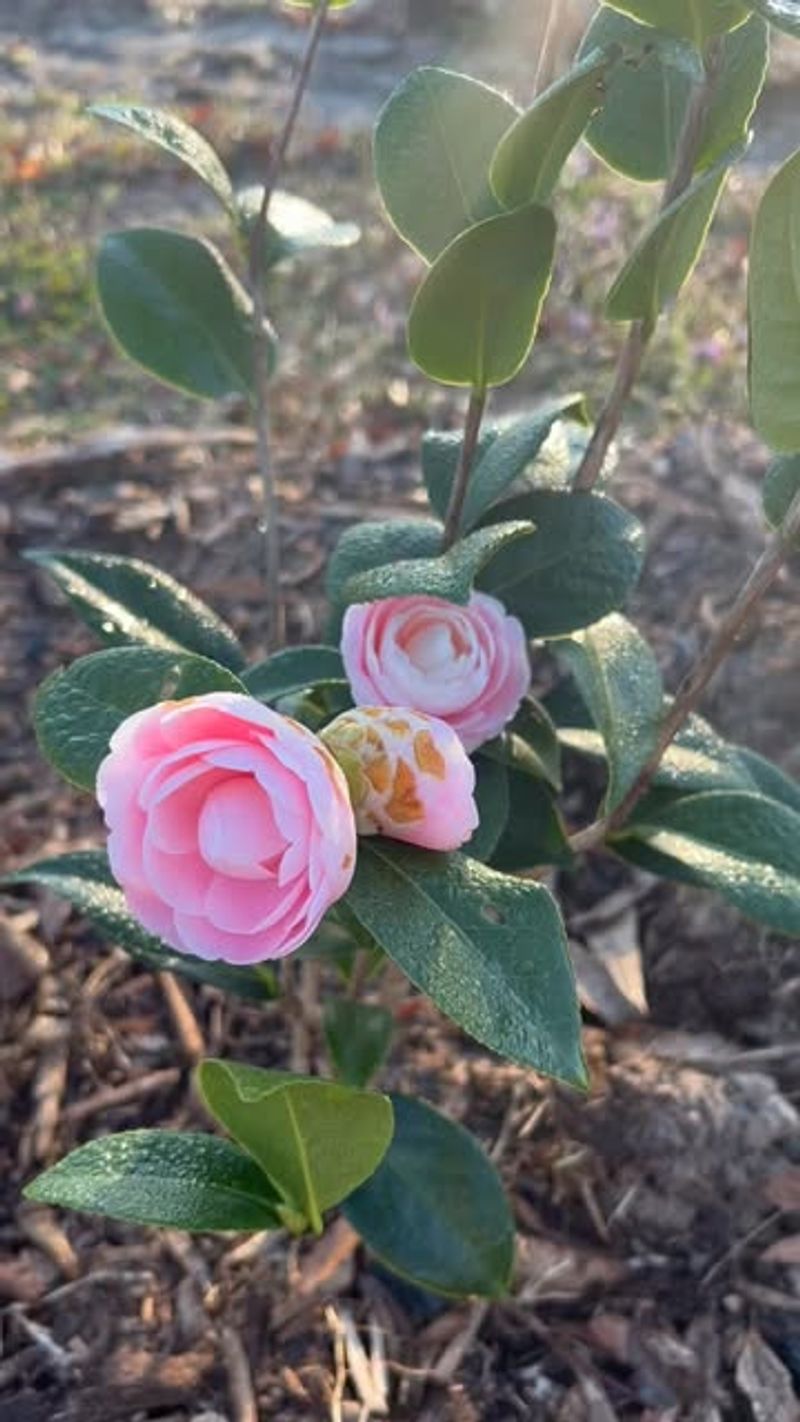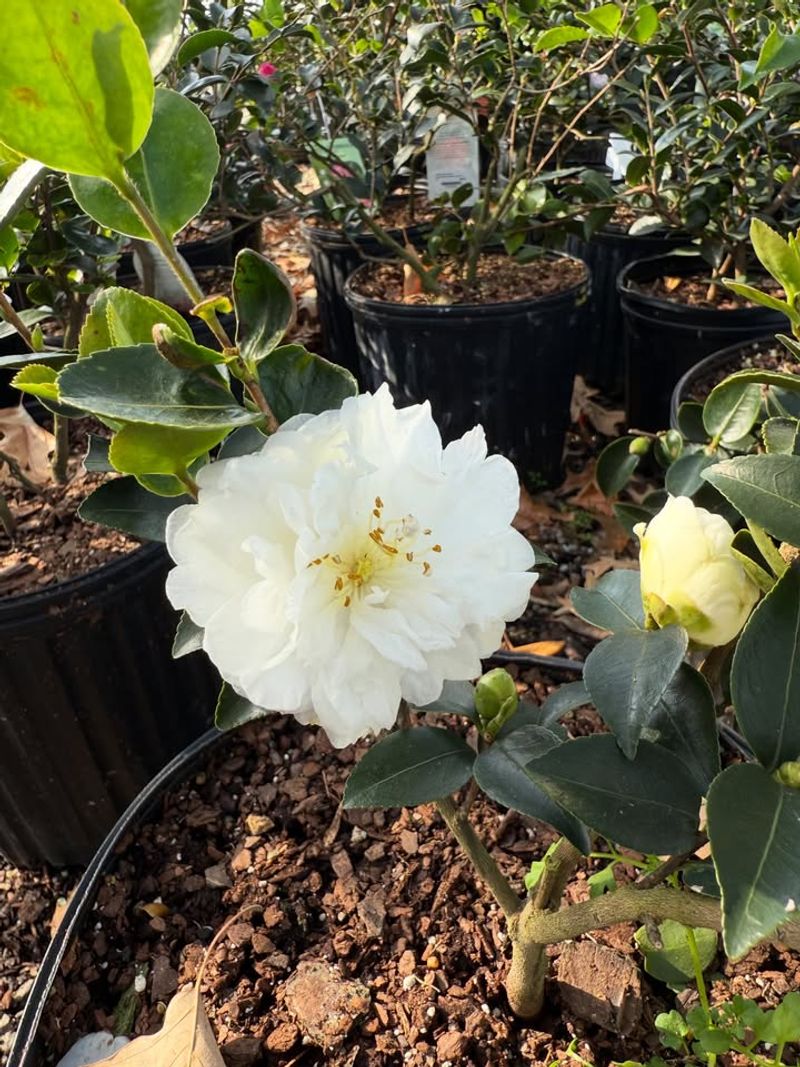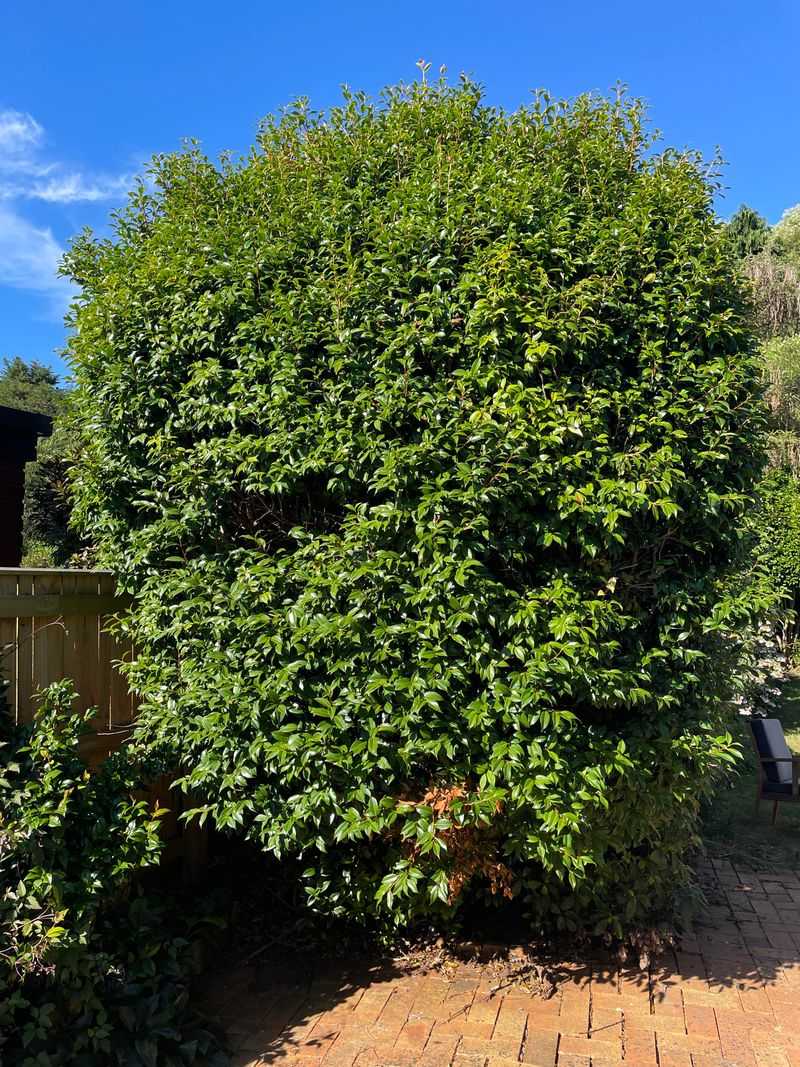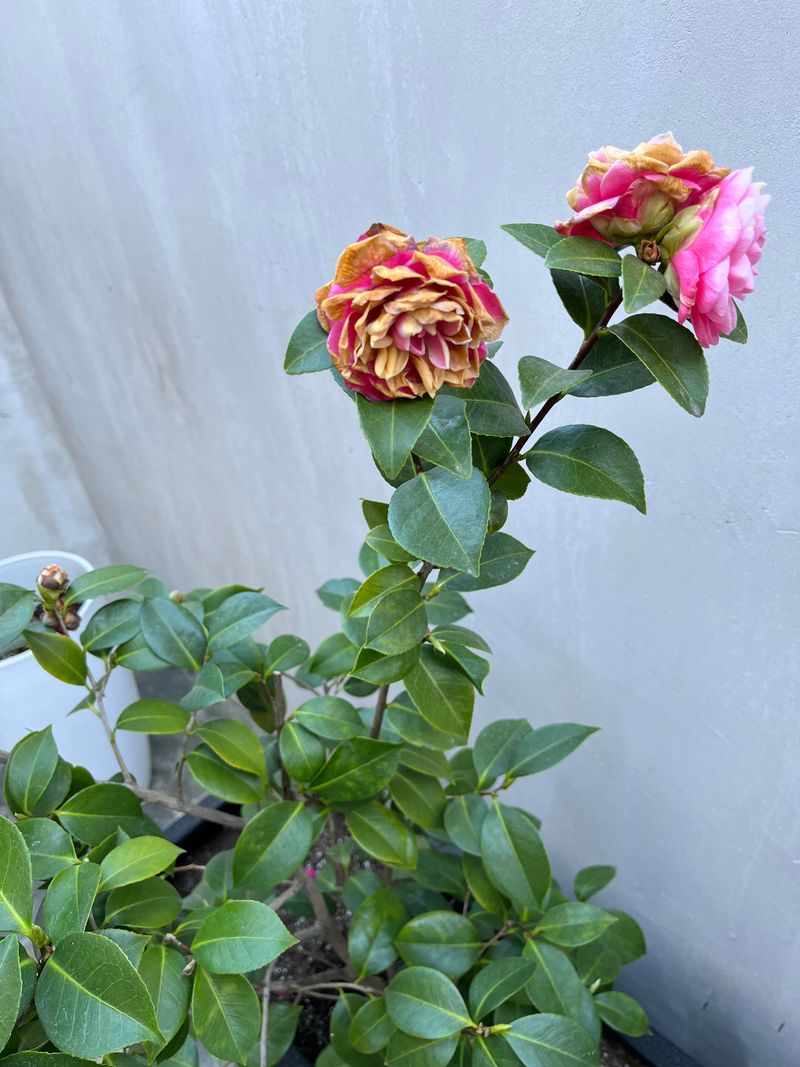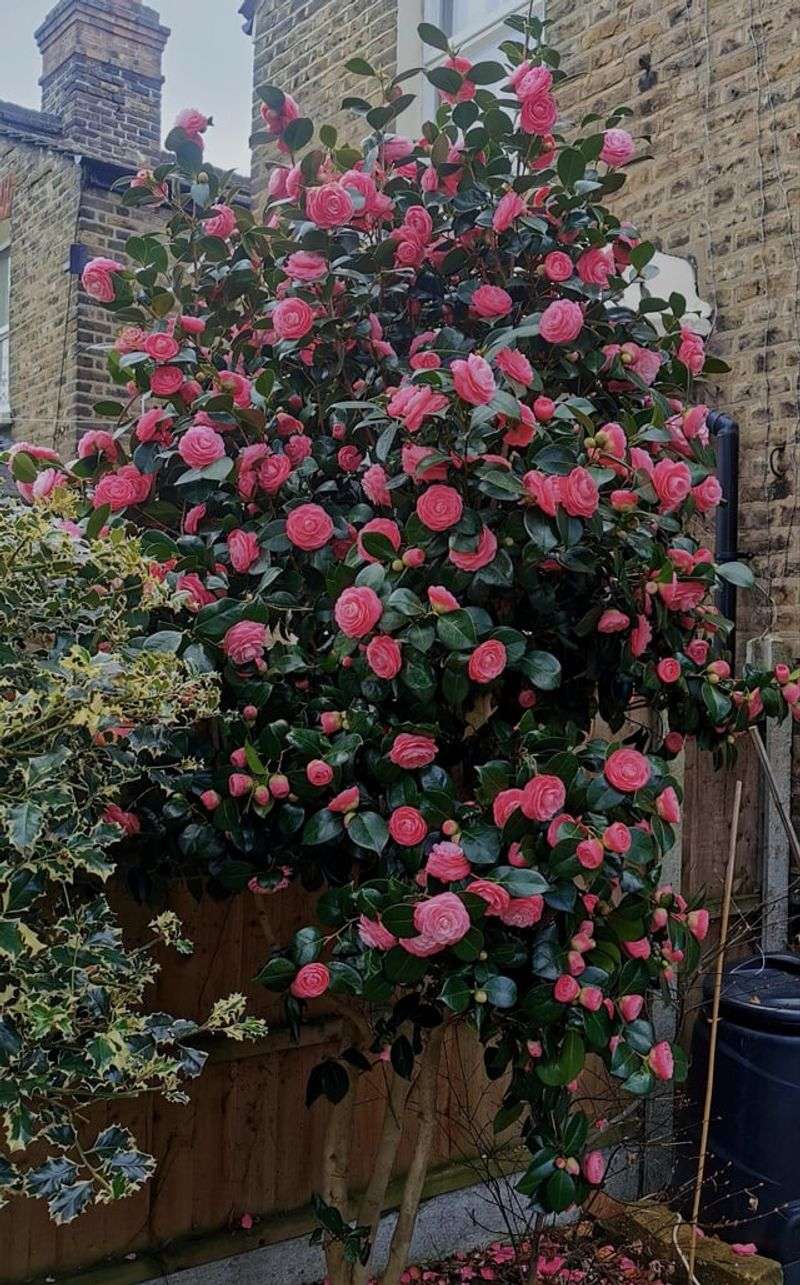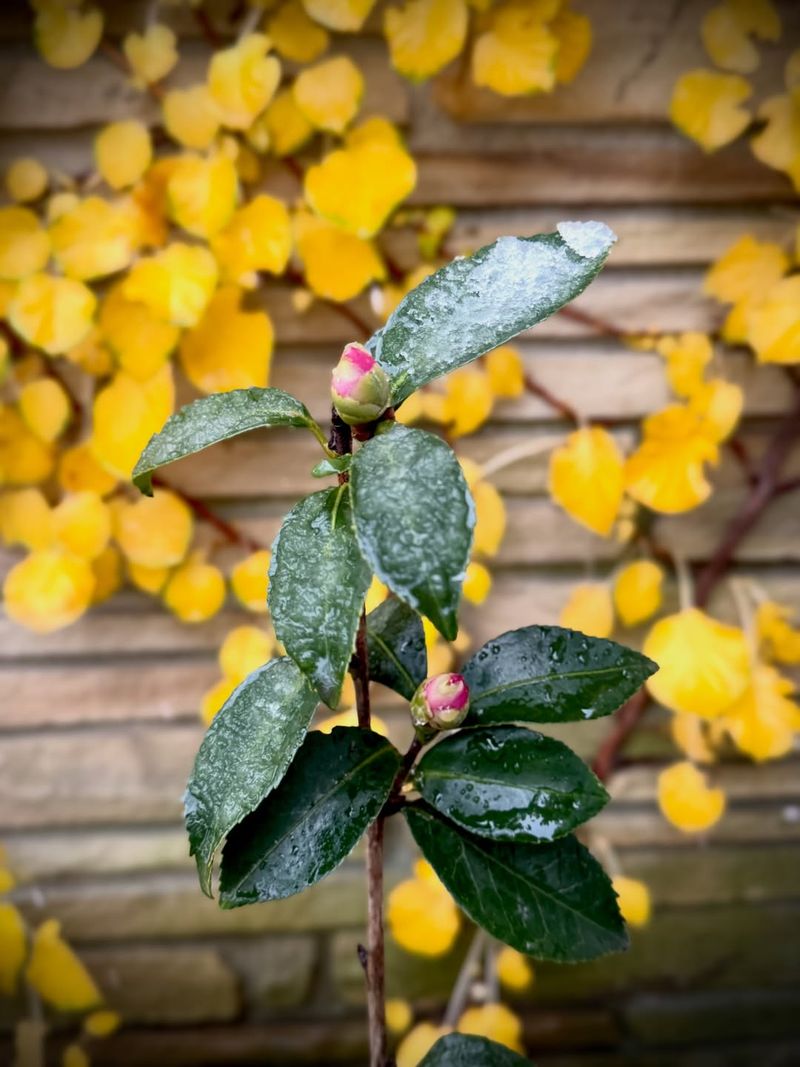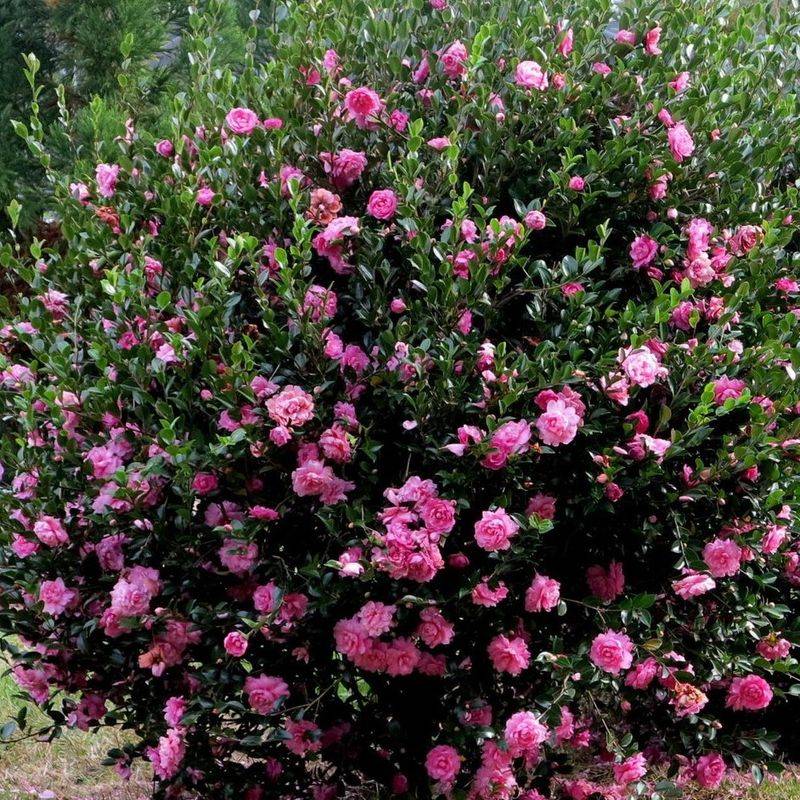Georgia gardeners have a little winter secret, and it’s the reason their camellias look like they’re glowing when everything else is half asleep.
It feels almost magical watching those glossy shrubs burst with color while the rest of the yard is stuck in neutral.
There’s just something special about seeing blooms pop on cold mornings, and once you know the trick behind it, you’ll never look at winter the same again.
1. Choose Cold-Hardy Varieties for Georgia
Selecting the right camellia type makes all the difference when temperatures drop across Georgia gardens each winter season.
Varieties like Camellia japonica and Camellia sasanqua handle chilly nights better than tropical cousins, producing abundant flowers even when frost appears on lawns.
Local nurseries throughout Georgia stock these tough bloomers that thrive in zone seven climates, giving gardeners reliable color from November through March every year.
2. Plant in Protected Locations
Smart placement shields delicate blooms from harsh winds that sweep through Georgia neighborhoods during January and February cold snaps.
Positioning camellias near building walls or beneath tall pine trees creates natural windbreaks, preventing flower damage while maintaining enough light for healthy growth.
Many successful Georgia gardeners plant on east-facing sides where morning sun warms buds gently, avoiding the intense afternoon rays that stress winter bloomers.
3. Apply Thick Mulch Layers
A generous blanket of pine straw or shredded bark insulates roots from temperature swings common in Georgia winters, keeping soil conditions stable.
Spreading mulch three to four inches deep around the plant base retains moisture and prevents freeze-thaw cycles that damage tender root systems underneath.
Georgia gardeners refresh mulch each fall, creating a protective cushion that also suppresses weeds and slowly adds nutrients as organic material breaks down naturally.
4. Water Consistently Before Freezes
Hydrated plants withstand cold better than thirsty ones, so Georgia gardeners monitor weather forecasts and water deeply before predicted freezing temperatures arrive.
Moist soil holds heat longer than dry ground, protecting roots during overnight temperature drops that frequently occur across the state in December and January.
Checking soil moisture weekly ensures camellias never suffer drought stress, which weakens their ability to produce those spectacular winter flowers Georgia residents treasure so much.
5. Feed With Acidic Fertilizer
Camellias crave acidic soil conditions, and Georgia gardeners boost bloom production by applying specialized fertilizer formulated for acid-loving plants each autumn season.
Products containing sulfur and iron keep soil pH between five and six, the sweet spot where camellias absorb nutrients most efficiently for vibrant flowers.
Timing fertilizer applications for late fall gives plants a nutrient boost before blooming begins, ensuring Georgia camellias have energy reserves for months of continuous flowering.
6. Prune After Flowering Finishes
Timing pruning correctly prevents accidentally removing next winter’s flower buds, which form on camellias during spring and summer months across Georgia landscapes.
Waiting until late winter or early spring allows gardeners to enjoy every last bloom before shaping plants, removing damaged branches, and encouraging bushier growth.
Georgia experts recommend light trimming rather than heavy cutting, maintaining the natural form while improving air circulation that keeps plants healthy year-round in humid conditions.
7. Monitor for Petal Blight Disease
Wet winter weather in Georgia creates perfect conditions for fungal problems, so observant gardeners check flowers regularly for brown spots indicating petal blight.
Removing affected blooms immediately prevents spores from spreading to healthy flowers, protecting the entire display throughout the long blooming season ahead.
Many Georgia gardeners rake up fallen petals and dispose of them away from garden beds, breaking the disease cycle that can ruin future seasons.
8. Provide Afternoon Shade Coverage
Morning sunshine energizes camellias, but intense afternoon light during Georgia winters can scorch delicate petals and stress plants even in cooler months.
Planting beneath high tree canopies or using shade cloth creates filtered light conditions that camellias naturally prefer, mimicking their native forest understory habitat.
Georgia gardeners notice improved flower quality and longer-lasting blooms when plants receive four to six hours of gentle morning sun followed by protective afternoon shade.
9. Protect Buds During Hard Freezes
When temperatures plunge below twenty degrees Fahrenheit, Georgia gardeners drape frost cloth over camellias to shield vulnerable buds from damaging ice crystal formation.
Lightweight fabric allows air circulation while trapping warmth near plants, creating a microclimate several degrees warmer than surrounding areas during brutal cold snaps.
Removing covers promptly when temperatures rise prevents moisture buildup and fungal issues, ensuring Georgia camellias survive occasional extreme weather events with minimal flower loss.
10. Select Staggered Bloom Times
Planting early, mid-season, and late-blooming camellia varieties extends the flowering spectacle from October through April across Georgia properties year after year.
Sasanqua types start showing color in fall, while japonica varieties peak during January and February, providing continuous interest throughout the entire winter period.
Georgia gardeners create stunning displays by combining different bloom schedules, ensuring at least some camellias always show off gorgeous flowers regardless of weather fluctuations.



